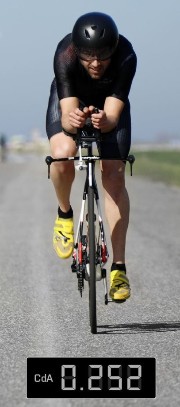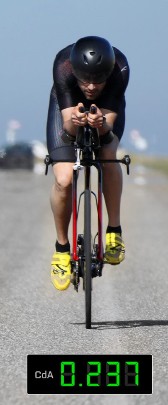I’m trying to educate myself more into this whole aero testing stuff, might want to pick this up at a certain point since I believe it will be a part of professional bike fitting in the future.
Recently Ku Cycle displayed a new aero comparison test that raises some questions.
https://www.ku-cycle.com/…-p5-vs-ku-cycle-tf1/
So, if you want to show that your bike in this case their own bike is faster than that of a competitor brand wouldn’t it be fair to set up both bikes similar. If this is not like in this test how much value can be taken from it?
If I look at the test I see so many different things like not the same power meter, not the same wheels, not the same saddle, bottle cage behind the saddle on the P5, not the same position but could be better on the P5 with the EX10 cockpit and even with the EX11 cockpit the bars could be lower more compared to the TF1 fit.
Also the data seem to be as in wattage vs speed vs displayed time ‘ improvement’ as far as my knowledge now is.
But maybe I’m totally off so wonder what experts have to say.
I think it is cool that companies are trying to do aero tests but if you are saying bike X or Y is faster than Z from another brand shouldn’t at least all variables as mentioned above be the same?
Jeroen
Didn’t we have a thread on this topic already?
When testing you can go in a few directions. All take time and $$
Path 1. You take the rider & optimize their position on Bike A vs Bike B. Bike A set up to the customer’s spec vs Bike B set up to customer spec. This gives the customer the lowest drag numbers on their preferred set up. Yet this doesn’t tell you anything about the bike itself.
Path 2. You take stock specs, maybe you/you probably should control for saddle/wheels/tires/anything else you can. You now get a controlled Bike A vs Controlled Bike B and find out which of those is faster.
Path 3. You take them out of the box and test them and find out which out of the box bike is faster. i think this would be horrifying, revealing and awesome all at the same time. So many companies make fast frames then stick shit parts on it to help get it to a certain price point. I suspect, based on some OEM specs I see, many brands have spec managers that don’t care or don’t know about aerodynamics, reducing crr, eeking out any and every watt they can before it gets to the customer.
Path 4. You take Path 2 and/or Path 3 and add a rider onto it after testing bike vs bike. This is more comprehensive, gives good data but also doesn’t let the rider/customer know which is The Best bike for their particular body morphology and how they ride the bike.
Path 5 which I’m sure there is but I can’t think of right now
I will say with field aero testing there is so much that can go wrong. Speed sensor dropping out, brake rub, power meter drop outs although this also allows you to dial down and help the customer. Hey test A is great but when you swap to wheels B there is brake rub somewhere. Let’s spin the wheel slowly and listen or Test A was great test B was shit bc your crank started to fall off midway through the run (true story).
If you’re a manufacturer, the educated/care about my race times/bike split/want to go as fast as possible for the least amount of kJ customers want to see the data. Yet it’s not really telling the customer the entire story.
Just as in this case KU isn’t really telling the entire story. Their bike may be slower without a rider yet do a phenomenal job managing airflow making it faster than other bikes with the rider on like the P5x. The KU story is from what I’m gleaming, for rider X the KU when set up like Y is faster than the other bike set up like Z for rider X. That’s a long arse headline though and doesn’t get as many clicks and eyeballs.
Or you could be like QR which came out with some unbelievable number (iirc 13w, maybe it was 8, either would be in a new ballpark) faster than the P5 disc. Yet no one in the industry believes it bc they’ve been mysterious about the data itself, specifically columns V,W & AC on their data sheets they got from A2.
Now, I do think their bikes are fast, I’ve helped several riders get on their bikes, they are at a good price point yet the question remains how fast is their Vpr/Xpr and if someone took both those bikes to the tunnel would it be independently verified?
I’ve been eyeing one of their road bikes. Anyone know how they ride?

